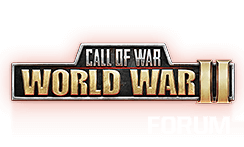z00mz00m wrote:
This thread reminds me of discussions around heavy tanks. Yes, it is possible to win using heavy tanks, if you have the patience. Wait for the research, wait to build them, wait to move them into position. Then hope the enemy is well behaved, waiting for you.
By the time you research and build and move a carrier-based navy into position, my cruiser navy has already reached the enemy, killed his navy, cleared the coastline, and my army has already landed and taken the enemy's core.
I've even done this to myself: built a carrier navy (5 carriers with 6 planes each), loaded with planes, sailed into position, and by the time I got there my own cruisers had already finished the job. Because they were able to start sooner, and move faster, the enemy had less time to respond. This is like invading an enemy with AC's on day 4 versus bringing heavy tanks on day 8. Yeah the HT beats an AC one on one, but we're not fighting one on one
We're not saying 10 cruisers plus a few destroyers will beat anything. We're just saying it's very resource friendly, flexible and effective strategy. Any time you can throw more resources at something than your opponent, you have an advantage, this is no exception.


